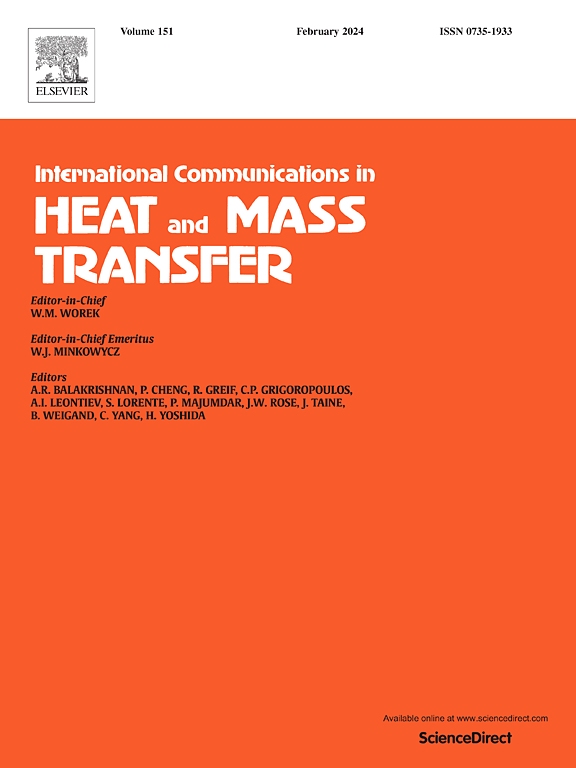Pool boiling experimental study on the impact of deposition on the nucleate boiling and bubble behavior of horizontally-placed tubes
IF 6.4
2区 工程技术
Q1 MECHANICS
International Communications in Heat and Mass Transfer
Pub Date : 2025-03-30
DOI:10.1016/j.icheatmasstransfer.2025.108890
引用次数: 0
Abstract
During the operation of the nuclear reactor, the corrosion particles deposited on the fuel cladding will change surface characteristics and affect the boiling heat transfer. However, due to the intricate structure of the deposition layer, the mechanism of the impact of deposition on nucleate boiling is not clear at present. A pool boiling experiment was carried out to investigate the effect of particle deposition on the bubble behavior and nucleate boiling heat transfer characteristics. The effect of deposition time and heat fluxes on the nucleate boiling was investigated. The effect mechanism of particle deposition on the circumferential heat transfer was revealed. The results indicate that the tube surface becomes more hydrophilic after deposition, and the deposited tube presents a boiling heat transfer state with the down-side surface in the form of large bubbles and the up-side surface in the form of a continuous stream of small bubbles. Furthermore, during the deposition process, the heat transfer coefficient decreases rapidly at the initial period, then increases slightly and stabilizes. Meanwhile, the rod circumferential temperature distribution varied before and after deposition, and the deterioration of the heat transfer coefficient of the up-side surface is more serious due to the influence of gravity deposition. The current tests show that corrosion particle deposition has a great impact on heat transfer, the post-deposition heat transfer coefficient can be reduced to 25% of its original value.
池沸腾实验研究了沉积对水平放置管的核沸腾和气泡行为的影响
在核反应堆运行过程中,沉积在燃料包壳上的腐蚀颗粒会改变表面特性,影响沸腾传热。然而,由于沉积层结构复杂,沉积对核沸腾影响的机理目前尚不清楚。通过池沸腾实验研究了颗粒沉积对气泡行为和成核沸腾传热特性的影响。研究了沉积时间和热流密度对成核沸腾的影响。揭示了颗粒沉积对周向换热的影响机理。结果表明:沉积后的管表面亲水性增强,沉积后的管表面呈现沸腾传热状态,下表面为大气泡,上表面为连续的小气泡流。在沉积过程中,传热系数在初始阶段迅速减小,然后略有增大并趋于稳定。同时,沉积前后杆周向温度分布发生变化,且由于重力沉积的影响,上表面换热系数的恶化更为严重。目前的试验表明,腐蚀颗粒沉积对换热影响较大,沉积后的换热系数可降至原值的25%。
本文章由计算机程序翻译,如有差异,请以英文原文为准。
求助全文
约1分钟内获得全文
求助全文
来源期刊
CiteScore
11.00
自引率
10.00%
发文量
648
审稿时长
32 days
期刊介绍:
International Communications in Heat and Mass Transfer serves as a world forum for the rapid dissemination of new ideas, new measurement techniques, preliminary findings of ongoing investigations, discussions, and criticisms in the field of heat and mass transfer. Two types of manuscript will be considered for publication: communications (short reports of new work or discussions of work which has already been published) and summaries (abstracts of reports, theses or manuscripts which are too long for publication in full). Together with its companion publication, International Journal of Heat and Mass Transfer, with which it shares the same Board of Editors, this journal is read by research workers and engineers throughout the world.

 求助内容:
求助内容: 应助结果提醒方式:
应助结果提醒方式:


